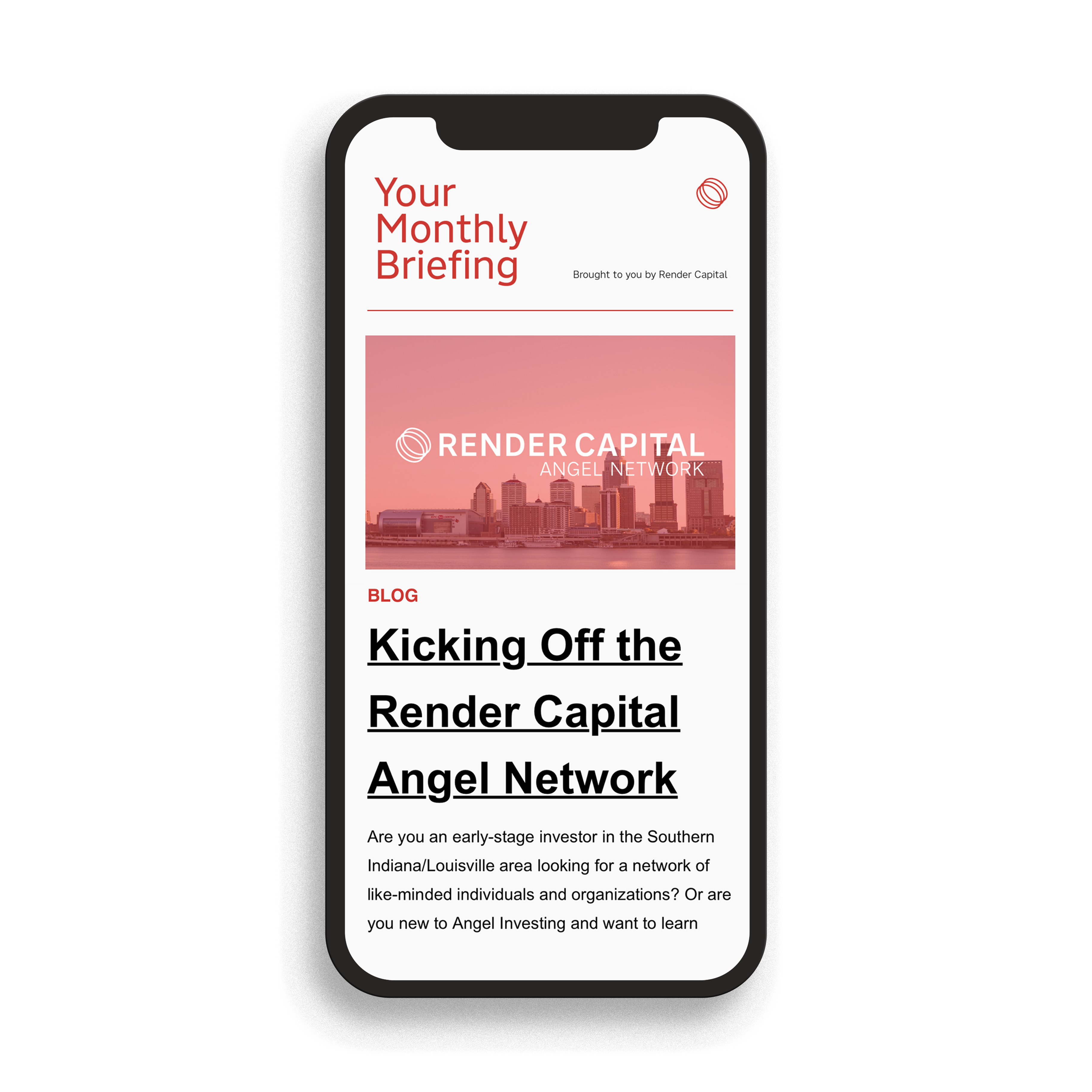There are a variety of ways to fund your business, each with its unique set of costs and benefits. The discerning entrepreneur will first weigh the various types of capital applicable to their business before pursuing funding.
A catchy statistic we like to throw around at Render Capital, and indeed at many like-minded organizations, is that less than 1% of companies in the United States raise venture funding. To be frank, I am not sure if the statistic is still precise, but it remains effective at pointing us to the reality that one form of funding (and the types of businesses it is best suited for), receives much more than its fair share of attention in most conversations about funding businesses. There is, in contrast, a rich diversity in forms of business in our national and local economies — and complementing this diversity in business forms is a diversity of ways to fund a business. What follows is a very high-level summary of the forms of funding available to the discerning entrepreneur, along with the unique set of costs and benefits associated with each form.
Three disclaimers before jumping in: first, for simplicity, we will focus on three summary buckets of funding types: grant, debt, and equity investments. In reality, there is a wide variety of flavors within each of these categories, as well as investments that combine elements of multiple categories into one hybrid structure. Second, with the pointed exception of funding a business through customers (see disclaimer no. 3 below), we will avoid better-worse language in this summary as the best form of funding is unique to each business, its context, and its owner(s). We will focus instead on the costs and benefits of one type of funding relative to the rest.
Third: customers are the best source of funding for any profitable venture. In fact, acquiring more and better customers should be the (business) goal for seeking all other forms of funding. To generalize, business owners typically seek external forms of funding because (1) they need to spend money to build a product — whether that is a physical structure, or software platform — before they can attract customers, who in turn supply the revenues that maintain the product, and grow the business by attracting more customers; or (2) in order to accelerate customer acquisition in cases where profits from existing customers do not fund the acquisition of new customers quickly enough. In all cases, customers are the goal of a sound business. In fact, even in the scenarios above, the prudent business owner will look first to customers to prepay in one form or another before moving to other, external forms of funding.

Grant Funding
Grant funding describes, for the purposes of this summary, all forms of funding that are both non-dilutive, and awarded with no expectation of repayment of the contributed capital, or any interest on that capital. This type of funding is typically awarded for mission reasons, applicable if and when there are organizations (both philanthropic and for-profit) with a mission objective satisfied by the receiving company. Grant funding’s greatest advantage is that (1) it is non-dilutive, meaning the receiving business does not need to sell any ownership in the company in exchange for funds, and (2) the capital awarded carries no expectation of repayment — whether interest or principal. Grant funding can, however, come with its own unique set of non-financial costs in the form of obligations like reporting requirements. An additional, powerful benefit of grant funding is that it can be catalytic — subsequent investors and owners alike benefit from free leverage on every other dollar invested in the business. As a result, a grant may further serve to de-risk an investment and do so enough to activate investor capital that would otherwise have remained on the sidelines.
Debt Funding
Debt financing in this summary represents the range of vehicles through which an investor loans capital to a business with the expectation that the principal — plus interest on that principle — will be repaid under certain negotiated terms and/or timelines. This includes both traditional bank debt, and alternative forms of debt capital, such as revenue-based financing.
“The major advantage of debt financing is that like grant funding and unlike equity funding, it is non-dilutive. The business owner need not sell off a portion of their business in exchange for the investment”
The major advantage of debt financing is that like grant funding and unlike equity funding, it is non-dilutive. The business owner need not sell off a portion of their business in exchange for the investment; instead, a lender evaluates the creditworthiness of the business and invests in the business believing simply that the principal will be repaid along with the negotiated premium, within the specified term and time period.
The costs of debt funding include decreased solvency, which increases the risk profile of the business, and a loss of flexibility in the management of the business. Describing these costs in inverse order: debt investments typically carry with them financial covenants designed to enable the lender to recover a portion (or all) of their investment, and which restrict operational flexibility of the business. For example, lenders may require the business to maintain a minimum cash balance at all times, or restrict them from certain activities which would further increase the risk profile of the business. Next, while the non-dilutive nature of debt investments is a strong advantage, allowing an owner to raise capital without selling a portion of the business, violation of financial covenants, or inability to keep up with debt repayment can trigger the forfeiture of the entire business. Furthermore, while debt investments are catalytic at the beginning of their term, the subsequent obligation to repay principal and interest can itself further decrease operational flexibility and become a barrier to growth if the initial infusion of capital does not sufficiently accelerate business growth.

Equity Funding
Equity investments, the third and final form of capital in this summary, generally describes the exchange of investment capital for ownership in the business itself.
Perhaps the strongest advantage of raising equity relative to acquire debt or receiving grant funding is the alignment it creates between the business, its original owner, and the investor. In fact, an equity investment simply allows an individual or organization (the investor) to buy into ownership of the business. The equity investor becomes an owner and is repaid in the same way other owners are compensated; through profit distributions, or upon the sale of the business (with the important exception that equity investments typically provide investors a liquidation preference, which is a topic for a separate blog). Because of this alignment, equity investors are partners rather than creditors; they are vested in the success of the business and incentivized to leverage their networks and expertise to support its growth and development.
“Equity investors are partners rather than creditors; they are vested in the success of the business and incentivized to leverage their networks and expertise to support its growth and development.”
Equity investments carry their own unique set of drawbacks. They are described by many as the most expensive form of funding, and with good reason — owners sell a portion of the business itself and the affiliated upside in exchange for investor capital. For an illustration, let’s say you are just starting out and your business is worth $1 million. If you sell 10% of the business to an investor (receiving $111k in return), and then the business grows until it is worth $50 million, the $111k stake you sold to your investor when your business was starting out has cost you $5M at maturity.
Furthermore, equity can and is often the most restrictive form of funding for the original business owner. You might expect equity investments to be more flexible than debt investments because they typically do not carry the same covenants, and may not require any financial repayment until the business is mature. However, as discussed before, the moment you take on an equity investor, you are no longer the sole owner of your business. Depending on the terms under which the new owners buy into the business (and note that this does not depend directly on how much of the business is sold), the original owners may find that they have taken on a boss and lost control of the governance of their business.
With all of this in mind, the discerning entrepreneur in need of capital to fund her business will first weigh the various types of capital applicable to their context before getting tactical in the pursuit of funding.
.png?width=2708&height=560&name=2022%20Render%20Capital%20Red-04%20(4).png)




